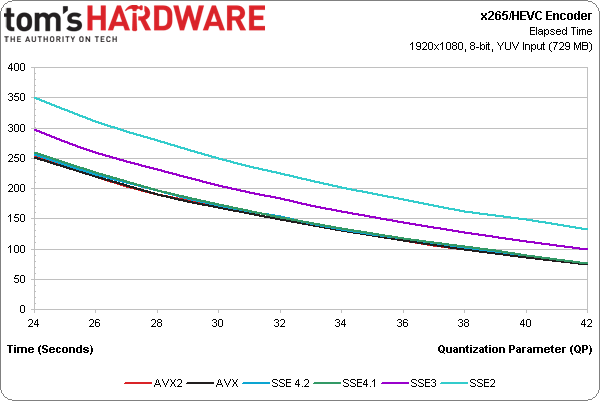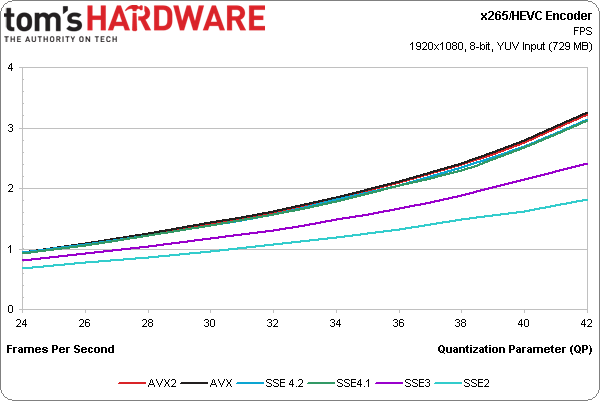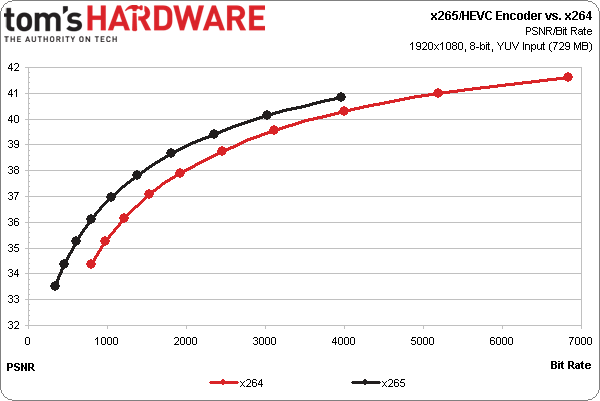The first benchmarks of the free x265 codec

Yesterday, MulticoreWare published the first alpha version of the x265 library under the GPL in public . It is an open source implementation for the HEVC / H.265 standard, adopted in January . Just as x264 now exists as a free implementation of H.264.
Tom's Hardware has conducted comparative tests of x265 and x264, which showed very encouraging results.
The x265 library code is still very raw, only x86 is supported, there is no B-frame support for maximum compression, and some of the optimizations inherent in x264 are lacking.
Despite all this, the test results show a very good increase in quality / bitrate compared to x264.
During testing on the Core i7-4770K, the following command was used:
x265 --input Kimono1_1920x1080_24.yuv --width 1920 --height 1080 --rate 24 -f 240 -o q24_Kimono1.out --rect --max-merge 1 --hash 1 --wpp --gops 4 --tu-intra-depth 1 --tu-inter-depth 2 --no-tskipwith quantization parameters (QP) from 24 to 42.

The results show that x265 benefits most from using the SSE3 instruction set, and then SSE4.1. At the same time, the gains from AVX and AVX2 are relatively small.
X265 developers hope to achieve real-time 1080p30 encoding speed on an Xeon server with 16 cores next month. Well, for now, on the quad-core Core i7-4770K, they show about 3 FPS.

Finally, the most important thing is comparing x265 and x264. As tests have shown, the new codec shows 25-35% better compression at the same quality level.

Alternatively, with the same bitrate, you can get significantly better picture quality on x265 than x264.
